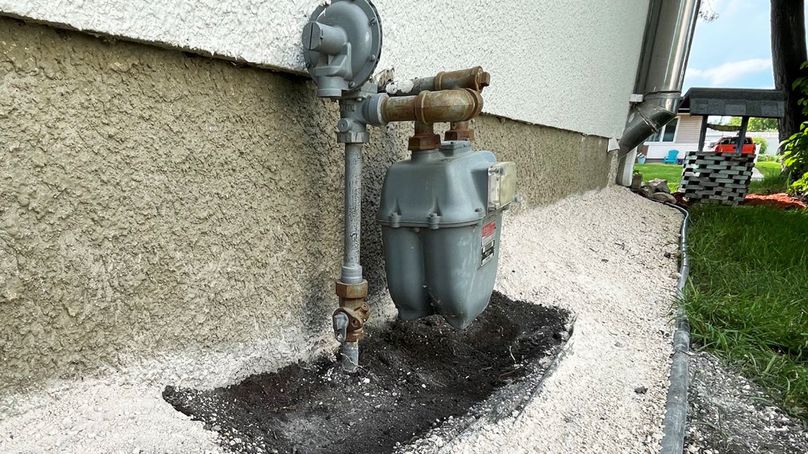If you are landscaping around the house this fall, be careful not to bury, block or obstruct Hydro equipment.
The gas meter attached to your house has to be accessible. That includes the gas line, known as a “riser,” that runs from the meter down into the ground. It has a shutoff valve we may need to use in an emergency. If you’re adding soil, stones, or other material up against your house, take care not to bury the riser and the shut off valve.
“The shut off valve to your gas riser needs to be accessible at the top and bottom,” says Chris Remillard, Manitoba Hydro Gas Services Supervisor. “Three inches clearance is required.”
“In an emergency, it is critical we can access the meter and riser easily and quickly to turn off your gas,” he says.
If you are using concrete or asphalt at the base of the gas line, make sure to put a sleeve coming up from the ground around the riser to protect it from potential damage from shifting ground. In winter, keep the snow and ice clear from the unit. And of course, avoid damaging the meter with tools or machinery.
Other landscaping safety tips
Tree planting
Before you plant a tree, look up. If your tree looks like it will touch an overhead powerline as it grows, find another location. Plant trees a minimum of 2 meters back from a power line. Plant taller growing trees like willow, ash, maple, evergreen at least 6 meters back from a power line.
Padmount transformers
There may be a big green metal box in your yard; it contains a transformer that reduces the voltage of electricity to your home. Do not block the padlock side of padmount transformers with ornamental shrubs. The locked side must be available for maintenance work.
Click Before You Dig
If you need to dig deeper than 15 cm, Click Before you Dig so we can make sure there are no gas or electricity lines where you plan to sink that new fence post, plant new trees, or install a fire pit.




